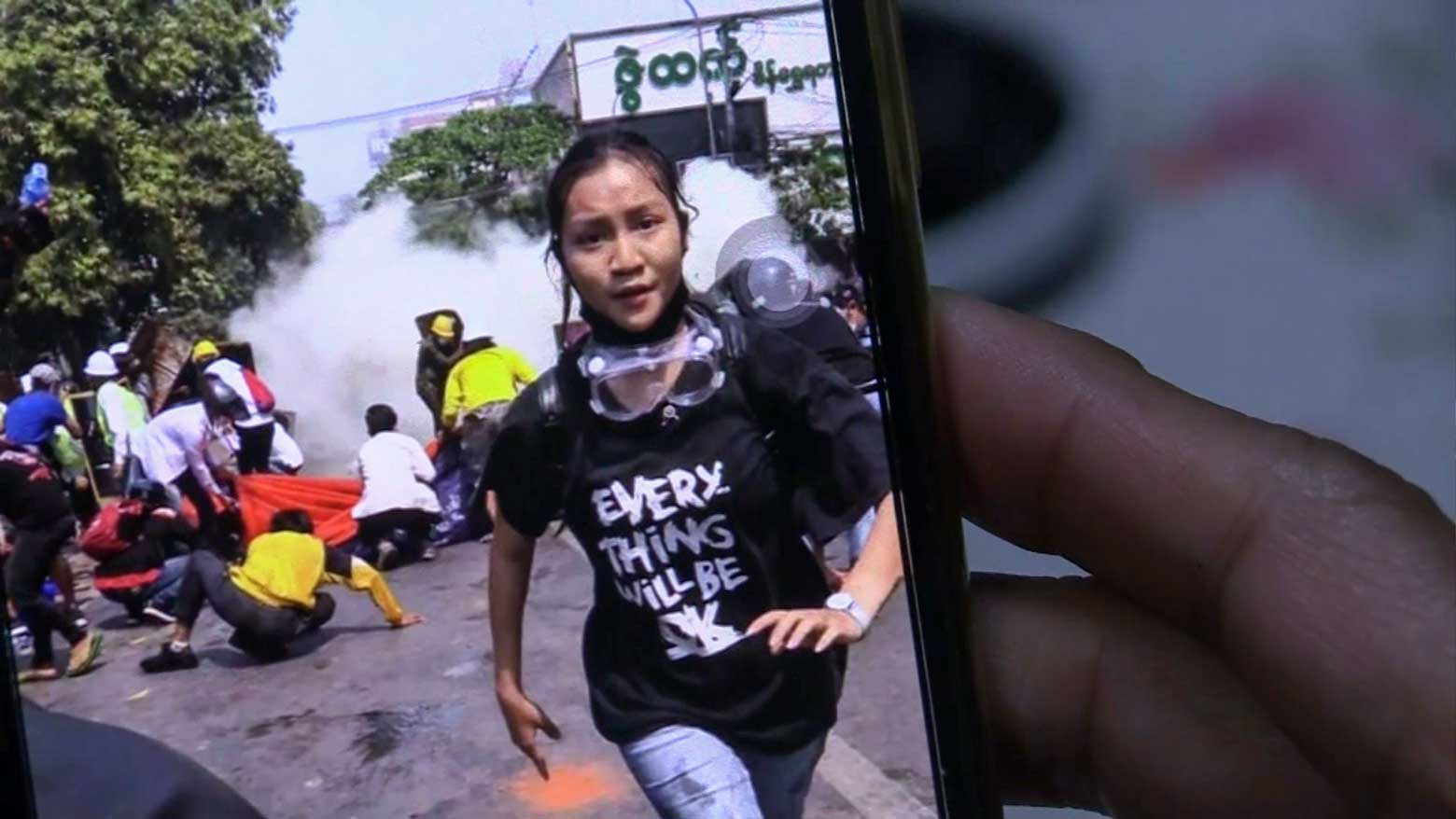A death and a denial
Kyal Sin, who went by the nickname Angel, was demonstrating in Mandalay on March 3 when she was shot and killed. Images of the 19-year-old shortly before her death were published by media around the world.
Military authorities have denied any involvement in her death. They exhumed her body and claimed to have conducted an autopsy. On state-run television, they said the lead found in her body is different from that which is in bullets used by police. They added that officers could not have shot her from behind because they had been face-to-face with protesters.
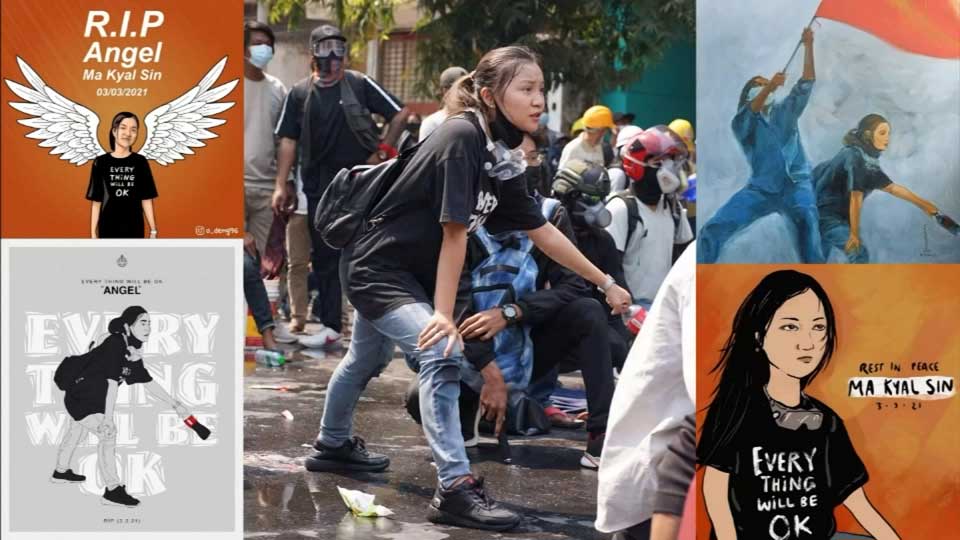
Digital evidence
To find out what actually happened, NHK teamed up with experts from Amnesty International. The human rights group has a team of specialists in analyzing civilian video footage. Together we collated videos and photos from that day and tried to determine the exact time and location each image was taken. We also tracked down the people who took the images, and heard their accounts of what happened.
The demonstrators were protesting at an intersection of 84th Street and 30th Street in central Mandalay. A live broadcast by Mandalay In Depth News revealed that the security forces arrived at 11:20 am.
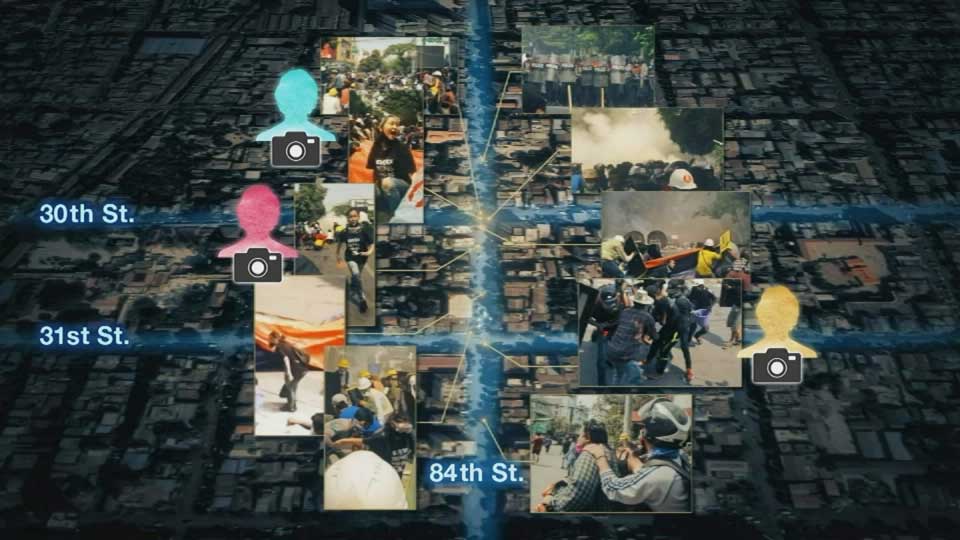
One of the people at the protests was live-streaming on Facebook and captured Angel. He told us he chose to film her because she was so energetic.
At 11:50 am, the military and police fired into the crowd. The protesters, including Angel, began retreating. The security forces continued to push them back.
"We were demonstrating peacefully. Even when we were forcibly pushed back, we would just retreat and not aggressively confront them," one eyewitness told us. "They kept moving forward, firing their weapons all the time."
The protesters retreated to 31st Street. One photograph of that location shows Angel crouching. Another shows someone being carried, wearing shoes and a wristwatch that match those worn by Angel.
We tracked down the photographer to extract meta-data embedded in the images, and verify when they were taken. The two images were shot just 30 seconds apart. Angel was presumably killed during that span.
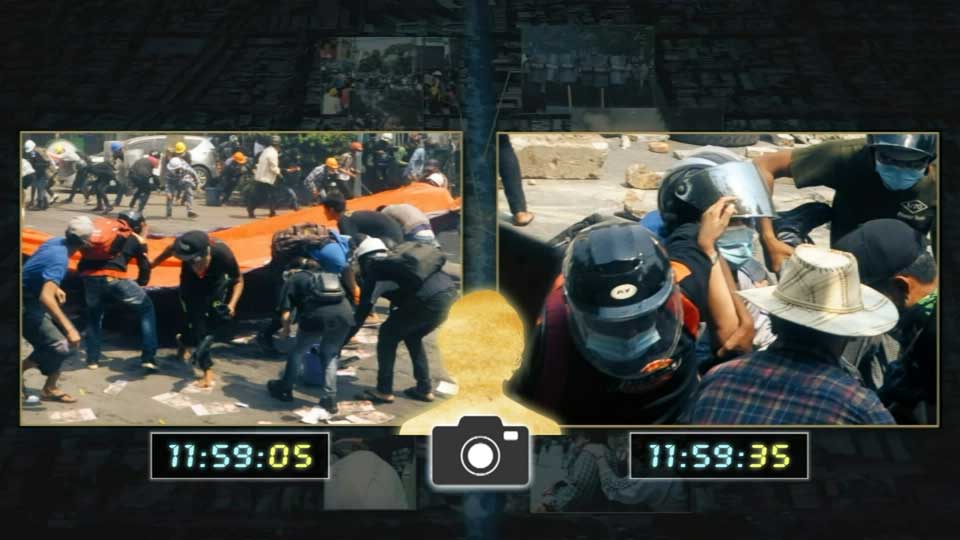
The fatal shots
A video that circulated on social media captured what we believe is the moment she was shot. It shows Angel running from the security forces, then falling after some bangs. The clip is just four seconds long, and the time and location are unclear.
But we found a longer version of the video that shows the location as 31st Street, which is where those two images of Angel were taken. It is highly likely that the video was taken in the window between the two photographs, and the bangs are from the gunshots that killed her.
NHK had the sounds analyzed by an acoustic laboratory and weapons experts, and they concluded there was a high probability that the sounds were of three gunshots. This suggests that Angel was shot in the back while running from the security forces, which would contradict the military's claims.
Militarized weapons used on the street
The images we obtained also show what weapons the security forces were using against the demonstrators. A weapons expert at Amnesty International says they were clearly lethal weapons, including 12-gauge shotguns and assault rifles.
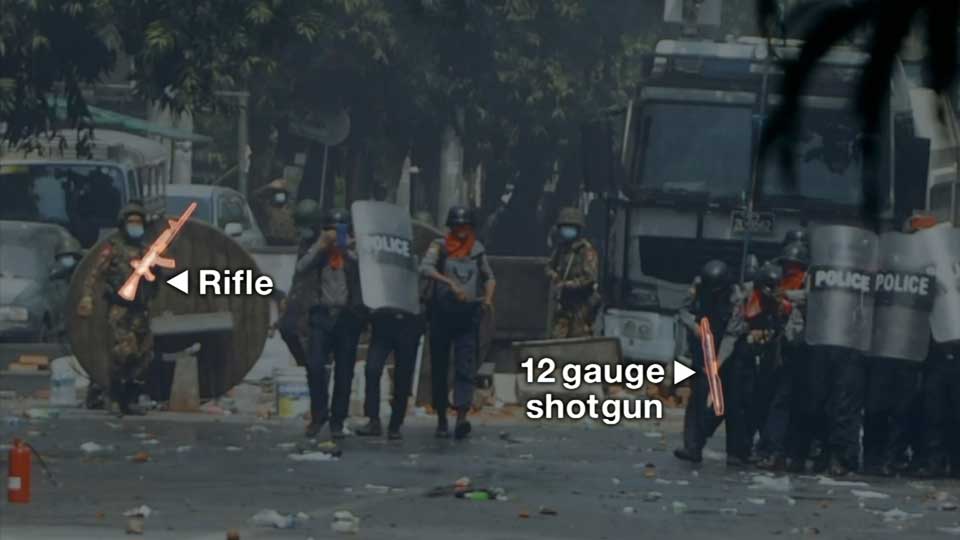
Patrick Wilcken, an arms control researcher with Amnesty International, says the use of militarized weapons to police a street protest shows just how brutal the crackdown has been, and why we have seen hundreds of deaths and thousands of injuries.
